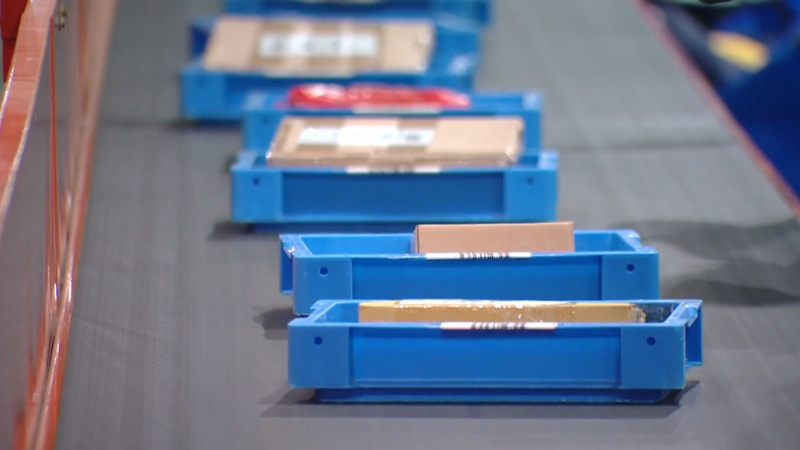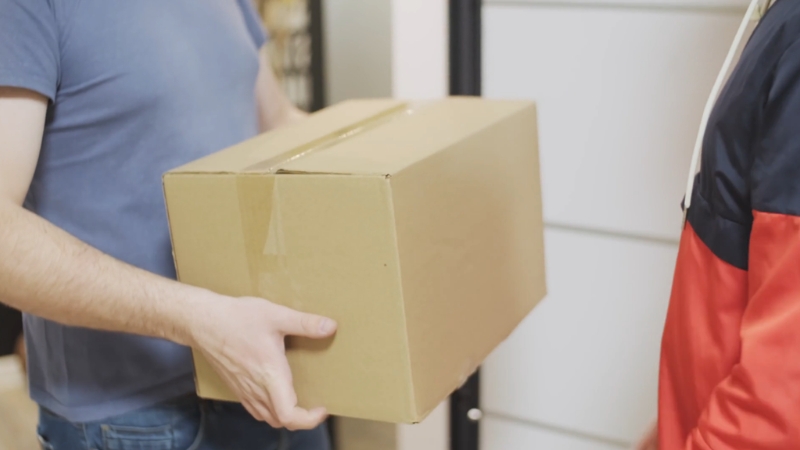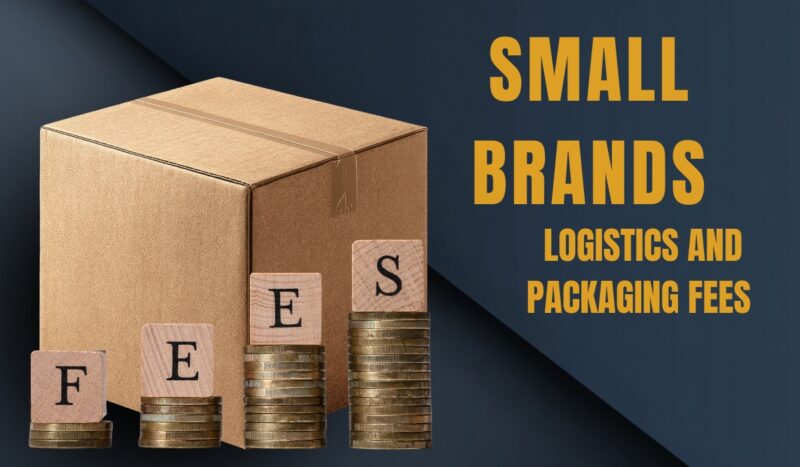Small e-commerce brands feel every shift in the logistics world. Higher carrier rates, fresh surcharges, pricier cardboard, and growing rules around sustainability all push costs upward. The increase is steady, and it is aggressive.
Many owners now see shipping and packaging as the line items most likely to squeeze margins in 2025. Even a simple box heading to a loyal customer carries more pressure than it did only a year or two ago.
The landscape looks tough. Still, survival is possible with careful planning and sharper decisions. The path forward runs through packaging choices, smarter carrier strategy, better data, and closer partnerships with suppliers.
The Cost Squeeze in 2025

Rising logistics expenses shape the daily operations of many small brands. Numbers from major carriers confirm the trend.
According to WSI, UPS and FedEx have both pushed general rate increases near 5.9 percent across many services for 2025. USPS raised mailing rates by an average of around 7.4 percent across core classes such as First-Class Mail. Those changes touch every parcel moving through the system.
Packaging is part of the pressure. Containerboard producers in North America have raised prices by about 60 to 70 dollars per ton, as per Fastmarkets. That change flows straight into higher box prices.
A basic corrugated shipper that once cost around half a dollar can now sit closer to seventy cents, depending on the size and design. Multiply that by steady order volume and the extra annual expense becomes hard to ignore.
Within that environment, small brands are searching for practical moves that protect margin without hurting customer experience.
Parcel Rates and Surcharges Keep Climbing
Carrier base rates are only one part of the challenge. Surcharges climb quickly and often carry more impact than the rate increase itself.
Recent updates from shipping analysts show:
- Additional handling fees on some FedEx services rising by around 4.1 percent.
- Oversize penalties climbing by roughly 18.5 percent.
- Stricter rules around unauthorized packages.
- Higher fees connected to fuel, delivery zones, and residential addresses.
For a small brand, the pattern becomes clear. The same parcel traveling the same distance now costs more. Packages that stretch beyond standard sizing become far more expensive. Deliveries into residential or remote regions add even more cost to the final bill.
Packaging Materials Grow Pricier
View this post on Instagram
Cardboard suppliers have raised their prices due to higher energy costs, tighter supply, and strong demand for e-commerce packaging.
Those increases ripple through every stage of a small brand’s operation. A company shipping a few hundred boxes each month can end up paying more than a thousand dollars extra per year just to keep orders moving.
For businesses looking to free up warehouse or overflow space, see affordable self storage in Prospect for a nearby option.
At the same time, customer expectations lean toward sustainability. Market forecasts show the global sustainable packaging sector climbing past 111 billion dollars in 2025, with more growth over the next decade.
Branded packaging remains a priority as well. Many shoppers want materials that look good, recycle easily, and feel sturdy.
Small brands must balance material cost, visual appeal, strength, and environmental goals without letting any one factor overshadow the rest.
Dimensional Weight and the Problem of Shipping Air
Dimensional weight rules add another layer of cost. Carriers bill shipments based on the greater of actual weight or a calculated weight tied to package dimensions. A lightweight but bulky item becomes expensive overnight.
A clear example comes from an item like pillows. A small box of soft goods might weigh three pounds yet carry a billed weight near thirty-seven pounds once dimensional formulas apply. Extra volume is the enemy here. Every unnecessary inch inside the carton increases the risk of falling into a higher billing tier.
Recent carrier updates show increasingly strict dimensional rules. Even minor variations in box sizing can trigger higher quoted weights. Small brands that rely on loose packaging or large filler volumes often absorb avoidable fees.
Strategy 1: Get Ruthless About Packaging Design

Smaller companies gain the most when they treat packaging as a core cost function rather than a routine task. Careful adjustments to design, materials, and sizing can bring meaningful savings.
Right-Size Every Shipment
Right-sizing does not require a full packaging overhaul. It begins with a detailed look at the top items your brand ships.
Steps many brands follow:
- Create a list of the twenty SKUs shipped most often and record the actual measured weight and dimensions.
- Match those items to a few box sizes that closely fit their profile.
- Cut down filler by using better inserts or dividers instead of large empty cartons.
- Move soft goods into padded mailers, book folds, or flexible packaging where appropriate.
The goal is simple. Reduce excess space. Every reduction in height, length, or width helps avoid high-dimensional weight brackets.
Switch Materials With Purpose
Material choice affects cost nearly as much as box size. Many brands review their corrugated grades and shift toward lighter options where structural strength is not critical.
Another common change involves replacing bulky plastic filler with paper or molded pulp inserts. Those alternatives pack tighter and reduce internal voids, improving dimensional efficiency.
Small brands also gain leverage by reducing the number of packaging SKUs they use. A limited range encourages higher volume purchasing, which often unlocks better quotes from suppliers.
Procurement groups suggest combining spend across all packaging categories, including mailers, tape, inserts, and cartons, to strengthen the negotiating position.
Weigh Sustainability Without Ignoring Total Cost

Sustainability sometimes carries a reputation for raising cost, although the financial picture is rarely that simple. Packaging decisions touch revenue, customer perception, regulatory fees, and shipping performance. When analyzed together, certain sustainable changes can save money.
A practical example is seen in the rising impact of extended producer responsibility programs in regions like the UK and the EU. Brands that switch toward more recyclable formats reduce their long-term exposure to packaging fees.
At the same time, data from business surveys indicate that stronger packaging design can raise revenue through improved brand presence and repeat purchases.
To help frame decisions, small brands often compare packaging levers in a simple table.
| Packaging Choice | Effect on Small Brands in 2025 |
| Reduce box size | Cuts material use and reduces dimensional weight charges. |
| Switch to a lighter corrugated grade | Lowers cost per box, still requires strength testing. |
| Adopt recyclable mailers | Improves brand appeal, may reduce regulatory exposure. |
| Use modest branding elements | Creates a distinct look without expensive customization. |
| Partner with local packaging suppliers | Cuts freight on packaging and helps meet regional rules. |
Strategy 2: Rethink Carrier Mix and Shipping Policy

Carrier diversification used to be optional. In 2025, it feels closer to a necessity.
Shop Across Carriers and Services
Carrier pricing varies widely by zone, weight, and delivery type. Many small companies use tools that compare UPS, FedEx, USPS, and regional carriers in real time. Others lean on third-party logistics providers for the same benefit.
Common adjustments include:
- Pairing a primary carrier with at least one backup.
- Testing postal-hybrid services for slower but cheaper delivery.
- Monitoring customer feedback when switching to more economical lanes.
The savings from a balanced carrier mix often outweigh the convenience of sending all parcels through a single company.
Use Regional Carriers and Alternative Networks
Regional parcel firms continue expanding their footprint in 2025. They often win on price in specific territories and can offer faster delivery inside those areas. In addition, competition from large private networks shapes broader pricing trends.
When big players adjust their strategies, smaller carriers and fulfillment partners sometimes improve their offers to stay competitive.
Small e-commerce brands benefit by staying flexible and testing alternatives. A regional option may cut costs in one state, while a postal-based service delivers better rates in another.
Shape Shipping Policies That Protect Margin
@80proofgoods Replying to @AP. Shipping policies are making to difficult for real, small businesses and artisan businesses to use this platform. #shipping #policies #tiktok #policy #artisan #smallbusiness #orders #handmade #change ♬ original sound – 80Proof Goods
Shipping policy is one of the strongest tools available to small brands. Many adjust their thresholds and pricing structures once they gain clarity on carrier costs.
Some practical steps:
- Set free shipping at an order value that aligns with desired margins.
- Introduce a flat-rate tier that stays predictable for the business and simple for customers.
- Keep expedited options available only when customers choose to cover the premium.
Clear policies, steady logistics spending and reduced surprises during periods of carrier change.
Strategy 3: Use Data Instead of Guesswork
Logistics decisions improve quickly when they rely on clean data rather than instinct.
Track the Right Metrics
Small brands often monitor total shipping spend, although that number alone does not show where the real leaks occur. More precise tracking brings better clarity.
Helpful metrics include:
- Shipping cost per order.
- Shipping cost as a share of revenue.
- Packaging cost per order.
- Surcharges as a share of the shipping cost.
- Damage rates and replacement frequency.
Those figures point directly to the categories that deserve attention.
Segment by Product, Channel, and Geography
Order profiles vary. A fragile item has different packaging needs from a durable one.
A domestic shipment differs from a cross-border shipment, particularly in the EU, where packaging regulations are stricter. Some marketplaces require specific packaging formats that change the material cost.
By segmenting orders, small brands can tailor packaging and carrier choices in a more targeted way.
Audit Invoices and Review Contracts
Carrier invoice auditing uncovers frequent billing discrepancies. Many small brands begin by matching each billed shipment against its contracted rate. Others track surcharge frequency to see how often shipments trigger extra fees.
Those insights matter during contract renewal. Adjusting minimum charges, discount brackets, or surcharge terms carries a significant financial impact.
Strategy 4: Collaborate Up and Down the Supply Chain
Partnerships play a key role in cost control.
Work With 3PLs for Better Rates and Smarter Packaging
Third-party logistics firms move high volumes across carriers and can often secure lower rates. They also provide packaging engineering support, analytics, and distributed fulfillment that shortens shipping distance.
A 3PL can:
- Test new carriers.
- Suggest better packaging formats.
- Rate shop automatically for every order.
Those services help small brands avoid guesswork.
Lean on Packaging Suppliers for Innovation
Suppliers bring expertise on material science, pricing trends, and sustainability. Many encourage clients to consolidate packaging formats, reduce waste, and redesign cartons for better logistics performance.
Small brands benefit by sharing forecasts, exploring material alternatives, and co-developing packaging that meets both functional and financial needs.
Prepare Early for Packaging Regulations and Fees
New packaging rules in regions like the UK bring large tax obligations. Some major retailers expect multimillion-pound increases from extended producer responsibility programs. Smaller companies selling into those markets face similar rules on a smaller scale.
Key tactics include moving more volume into recyclable formats, reducing material use, and improving reporting accuracy to avoid unnecessary fees.
Strategy 5: Turn Packaging and Delivery Into a Revenue Driver

Packaging often carries a hidden upside. With careful planning, it becomes a tool for repeat purchases and price stability.
Use Packaging to Strengthen Perceived Value
A growing number of businesses report higher revenue after improving their packaging experience. The uplift comes from better unboxing, clearer messaging, and a stronger brand presence.
Small brands usually start with simple elements:
- Branded tape.
- Stickers.
- A small printed sleeve.
- A one-color box design.
- A sturdy insert that frames the product neatly.
Each element raises perceived value without demanding a full custom packaging overhaul.
Reduce Costs From Damage and Loss
Damage creates a double hit. The customer receives a poor experience and the business must pay to ship a replacement.
Stronger packaging design reduces breakage while lowering filler needs. Small brands also evaluate product protection or shipping protection services where the math works in their favor.
Communicate Clearly With Customers
Many customers support leaner packaging if it reduces environmental impact. Clear explanations on product pages or during checkout help align expectations.
Some brands explain shipping thresholds or why remote regions carry an added delivery time. Others allow customers to choose between a low-cost, slower option and a faster, premium option.
Better communication eases tension when costs shift and shipping policies evolve.
A 90-Day Playbook for Small Brands

Month 1: Baseline and Quick Wins
- Pull shipping and packaging spend from the past year.
- Calculate shipping cost per order and packaging cost per order.
- Identify surcharge trends.
- Measure actual packed dimensions for the top twenty SKUs.
- Implement at least one packaging change that reduces empty space.
- Begin basic invoice audits to catch billing errors.
Month 2: Carrier and Packaging Optimization
- Run rate shopping for typical shipments across multiple carriers.
- Test regional or postal-hybrid services where appropriate.
- Review lighter materials or redesigned packaging for priority items.
- Evaluate regulatory alignment for EU or UK shipments.
Month 3: Strategic Refinement and Branding
- Adjust free shipping thresholds and flat-rate policies based on new data.
- Make one targeted investment in better-branded packaging.
- Ensure cross-border packaging meets regulatory expectations.
- Lock new standards into internal procedures to maintain progress.
Summary
Small brands face real pressure in 2025. Carrier rate hikes, rising surcharges, more expensive cardboard, and expanding packaging regulations all tighten margins. The environment looks demanding. Even so, a set of disciplined steps can protect revenue.
Right-sized packaging, better material decisions, multi-carrier strategies, accurate data, and early planning for regulatory changes all play vital roles.
Brands that treat packaging and delivery as core parts of the product experience gain an edge. They secure lower costs, stronger loyalty, and more stable margins. That approach shapes a path through the rising expense landscape and leaves room for sustainable growth.
Viola Moorhouse is the coauthor and research lead at Sharkalytics.com, specializing in startup performance tracking and investor strategy.
With a background in market research and business journalism, Viola focuses on separating the hype from the reality in the world of televised entrepreneurship. She’s passionate about making complex startup stories accessible to a wide audience.



